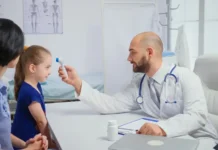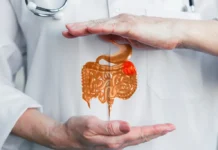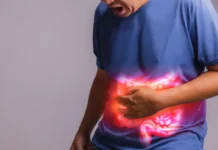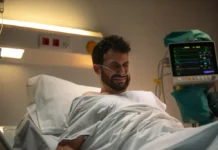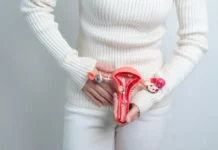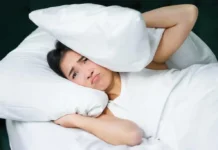Hemorrhoids, also referred to as piles, are enlarged veins located in the lower rectum and anus. They may manifest internally within the rectum or externally beneath the skin surrounding the anus, akin to varicose veins but specific to the rectal and anal regions.
A prevalent issue, hemorrhoids impact approximately half of the population at some juncture in their lives. Contributing factors include straining during bowel movements, pregnancy, and instances of constipation.
While most hemorrhoids are mild and amenable to home remedies, such as incorporating more fiber into one’s diet, staying well-hydrated, and utilizing over-the-counter pain relievers, certain cases may necessitate medical intervention. Procedures like rubber band ligation, sclerotherapy, or surgery could be warranted for more severe instances of hemorrhoids.
What are hemorrhoids?
Hemorrhoids, commonly known as piles, refer to the swelling of veins in the anus and lower rectum. This prevalent condition affects approximately half of all adults at some point in their lives. Hemorrhoids manifest as either internal or external, with internal ones forming inside the rectum and external ones developing under the skin around the anus.
Various factors can contribute to the development of hemorrhoids, including:
- Straining during bowel movements
- Prolonged periods of sitting, particularly on the toilet
- Chronic constipation or diarrhea
- Obesity
- Pregnancy
- Anal intercourse
- Consumption of a low-fiber diet
- Regularly lifting heavy objects
Types of Hemorrhoids
Hemorrhoids can manifest either internally or externally within the rectum, determining their type.
- Internal hemorrhoids: These hemorrhoids occur within the rectum. They are normally painless; however, they may bleed at some stage during bowel movements.
- External hemorrhoids: These hemorrhoids occur outside the anus. They can be painful, itchy, and swollen.
- Prolapsed Hemorrhoids: Both internal and external hemorrhoids can prolapse, extending and bulging outside the anus. Prolapsed hemorrhoids may lead to bleeding or pain.
Symptoms of hemorrhoids
Symptoms of hemorrhoids can vary based on type and severity. Common indicators encompass:
- Rectal bleeding (visible as bright red blood on toilet paper or in the stool)
- Pain or discomfort around the anus
- Itching or burning sensations around the anus
- A sense of fullness in the rectum
- A palpable lump around the anus
While most hemorrhoids resolve on their own within a few days or weeks, there are several measures to alleviate symptoms and expedite healing, such as:
- Adhering to a high-fiber diet
- Ensuring adequate fluid intake
- Using over-the-counter pain relievers
- Applying over-the-counter hemorrhoid cream or ointment
- Taking warm baths or sitz baths
- Avoiding straining during bowel movements
Should home treatments prove insufficient, or if hemorrhoids are severe, consulting a doctor is advisable. Medical interventions, including rubber band ligation, sclerotherapy, and surgery, are available for more severe cases.
Severe Hemorrhoid Symptoms
Severe hemorrhoids can cause a variety of signs and symptoms, which include:
- Pain and discomfort: People with severe hemorrhoids frequently experience expanded pain and discomfort, especially in the course of bowel movements or while sitting for long durations.
- Bleeding: Hemorrhoids can cause bleeding, which may be visible on toilet paper, inside the bathroom bowl, or on the stool. The blood may be vibrant purple.
- Prolapse: In severe instances, hemorrhoidal tissue may also protrude (prolapse) out of the anal opening, making it visible or palpable.
- Itching and infection: The affected region may additionally become itchy and irritated, leading to discomfort and a chronic urge to scratch.
- Swelling and inflammation: Hemorrhoids might also cause significant swelling and infection around the anal region.
- Thrombosis: In a few instances, blood clots can form inside external hemorrhoids, causing widespread pain, swelling, and a hard lump close to the anus.
- Difficulty cleansing after bowel movements: Severe hemorrhoids might also make it hard to clean the anal location very well after a bowel motion, contributing to pain and a sense of incomplete hygiene.
- Incontinence or leakage: In uncommon cases, extreme hemorrhoids may contribute to trouble controlling bowel movements, leading to leakage or incontinence.
It is vital to look for clinical attention if you experience persistent or excessive symptoms. Timely intervention can help manage the situation effectively.
How common are hemorrhoids?
Hemorrhoids are a prevalent condition, impacting an estimated 1 in 20 Americans. While they can emerge at any age, they are more commonly observed in individuals over the age of 50.
Who is at risk for hemorrhoids?
Hemorrhoids can affect anyone, but certain factors can heighten the risk, including:
- Overweight or obesity
- Pregnancy
- Low-fiber diet
- Chronic constipation or diarrhea
- Regularly lifting heavy objects
- Prolonged periods of sitting on the toilet
- Straining during bowel movements
Hemorrhoids are a frequently encountered and generally harmless condition. In cases of severe pain, bleeding, or other complications, seeking medical attention from a doctor is advisable.
Hemorrhoids vs. Anal Fissures
Hemorrhoids and anal fissures are two common conditions that can cause similar symptoms, such as itching, pain, and bleeding. However, there are some key differences between the two conditions.
Hemorrhoids are swollen veins in the rectum and anus. They can be caused by a number of factors, including straining during bowel movements, pregnancy, and obesity.
Anal fissures are small tears in the lining of the anus. They are often caused by passing hard or large stools.
How are hemorrhoids diagnosed?
A healthcare provider can diagnose hemorrhoids or anal fissures based on a physical exam and a description of your symptoms. In some cases, additional tests, such as a digital rectal exam or a sigmoidoscopy, may be recommended.
Hemorrhoids often go away on their own with home treatment, such as soaking in a warm bath, applying over-the-counter medications, and increasing fiber intake. If home treatment is not effective, your healthcare provider may recommend other treatments, such as rubber band ligation or surgery.
Anal fissures often heal on their own within a few weeks. However, if the fissure is severe or does not heal on its own, your healthcare provider may recommend medication or surgery.
How to Ease the Pain of Hemorrhoids

Hemorrhoids can be internal or external. The most painful type is external hemorrhoids. However, each sort can be handled with the following strategies:
- Use smooth restroom paper and wet wipes after each bowel motion.
- Apply ice to the place for 10 minutes, accompanied by wet warmth for 20 minutes.
- Drink plenty of water to soften your stool.
- Avoid alcohol and caffeine, as they could dehydrate you and worsen your symptoms.
- Use a commonplace household item to make an ice cube.
- Eat whole-wheat bread to enhance digestion and reduce redness and inflammation.
- Be conscious of the pressure you use at some stage in bowel movements and different sports to avoid overexerting the muscle tissues in the sphincter vicinity.
- Do not scratch hemorrhoids, as this will tear them open and increase the threat of infection.
- Eat fruits and vegetables that contain fiber, such as watermelon, okra, and cabbage.
- Drink enough water throughout the day to keep your stool gentle and prevent straining.
Treatment for Hemorrhoids
Most hemorrhoids are enhanced with home remedies within a few days. If your signs and symptoms are severe or do not improve with home treatment, you may want to look at a medical doctor. Your doctor may suggest over-the-counter or prescription medicines or minimally invasive processes.
What are some minimally invasive tactics that a physician would possibly suggest for treating severe hemorrhoids?
Several minimally invasive techniques are to be used for dealing with intense hemorrhoids:
- Rubber Band Ligation (RBL): This could be the most commonly employed minimally invasive technique for hemorrhoids. A small rubber band is placed across the base of the hemorrhoid, efficiently reducing its blood delivery. Subsequently, the hemorrhoid diminishes in length and typically falls off on some days.
- Infrared Coagulation: This approach involves using a small infrared light probe to cut back and cast off the hemorrhoidal tissue.
- Sclerotherapy: In this system, a sclerosing agent, along with aluminum potassium sulfate and tannic acid (ALTA), is injected into the hemorrhoid. This induces the hemorrhoids to settle and harden.
- Stapled Hemorrhoidopexy: Using a stapler, this system elevates and reattaches the prolapsed hemorrhoidal tissue to the rectal wall.
- Transanal hemorrhoidal dearterialization (THD): Employing Doppler ultrasound, this method identifies and ligates the arteries presenting blood to the hemorrhoids. This reduces blood delivery, causing the hemorrhoids to decrease.
Minimally invasive techniques normally entail less pain and shorter recuperation times compared to conventional hemorrhoidectomy surgical operations. Nevertheless, it’s vital to say that they’ll no longer be appropriate for each patient, and there’s a chance of recurrence.
Risk factors for hemorrhoids
Risk factors associated with hemorrhoids include:
- Straining during bowel movements: Exerting pressure during bowel movements can lead to swelling of the veins in the rectum and anus.
- Prolonged sitting: Extended periods of sitting also contribute to increased pressure on the veins in the rectum and anus.
- Chronic diarrhea or constipation: Conditions of ongoing diarrhea or constipation may induce straining during bowel movements, increasing the likelihood of developing hemorrhoids.
- Obesity: Being obese amplifies strain on the belly and pelvic veins, heightening the threat of hemorrhoids.
- Pregnancy: The delivered pressure on the veins in the rectum and anus throughout pregnancy will increase susceptibility to hemorrhoids.
- Anal sex: Engaging in anal sex can aggravate the veins in the rectum and anus, raising the risk of hemorrhoids.
- Low-fiber weight loss plan: Diets low in fiber can bring about harder stools, making bowel movements more strenuous and increasing the chance of hemorrhoids.
- Regularly lifting heavy objects: Lifting heavy gadgets can pressure the veins within the stomach and pelvis, making hemorrhoids more likely.
Other risk factors for hemorrhoids
Other elements contributing to the hemorrhoid threat encompass:
- Age: Individuals over 50 are more vulnerable to developing hemorrhoids.
- Family records: A family history of hemorrhoids increases the probability of private susceptibility.
- Medical situations: Certain health conditions, including liver disease, inflammatory bowel sickness, and portal hypertension, can elevate the danger of hemorrhoids.
What can you do to reduce your risk of hemorrhoids?
To reduce the threat of hemorrhoids, recall the following measures:
- Adopt a high-fiber weight-loss program. Enhance stool softness for simpler passage.
- Avoid straining in the course of bowel movements. Practice deep respiration and rest strategies if straining is necessary.
- Limit extended sitting: Take breaks and move around every 30 minutes if sitting for extended intervals is unavoidable.
- Maintain a healthy weight: Weight management can alleviate pressure on the abdominal and pelvic veins.
- Stay hydrated: Ample fluid consumption keeps stools gentle and regular.
- Regular exercise: Physical activity improves circulation and reduces pressure on the abdominal and pelvic veins.
If concerns about hemorrhoids arise, consulting with a doctor is advisable.
How to prevent Hemorrhoids
To prevent hemorrhoids, consider the following tips:
- Maintain a high-fiber diet to soften stool and facilitate easier passage.
- Stay well-hydrated to further soften the stool.
- Avoid straining during bowel movements; when the urge arises, respond promptly.
- Engage in regular exercise to promote bowel regularity and prevent constipation.
- Maintain a healthy weight to reduce additional pressure on the rectal and anal veins.
- Steer clear of prolonged sitting, especially on the toilet; take breaks every 20–30 minutes if required.
Prognosis of Hemorrhoids with Treatment
Most hemorrhoid symptoms improve within a week with at-home treatments, such as over-the-counter pain relievers, sitz baths, and fiber supplements. If hemorrhoids cause extreme pain or discomfort, a medical procedure or even surgery may be necessary.
Conservative treatment is often effective in resolving hemorrhoid symptoms, but there is a 10–50% chance of recurrence. The risk of recurrence after surgery is less than 5%.
Complications of Hemorrhoids
Although rare, complications of hemorrhoids can include:
- Bleeding: Persistent or heavy bleeding, with or without pain, should be evaluated by a doctor immediately.
- Strangulated hemorrhoid: This occurs when the blood supply to a prolapsed internal hemorrhoid is blocked by the muscles around the anus. Strangulated hemorrhoids can cause severe pain.
- Anemia: Significant, chronic blood loss from hemorrhoids can lead to anemia, which occurs when the body does not have enough red blood cells to carry oxygen to the tissues.
- Blood clots: Blood clots can sometimes form within a hemorrhoid, especially in external hemorrhoids. This can be very painful and may require removal by a surgeon.
- Infection: Ulceration and infection can occur after hemorrhoid treatment.
- Urinary retention: Difficulty passing urine is a common complication of surgery for both internal and external hemorrhoids.
When to Call the Doctor
You should see a doctor if:
- Your hemorrhoid symptoms do not improve after a week of home treatment.
- You develop new hemorrhoids.
- You experience significant anal pain.
- You notice heavy rectal bleeding.
- You develop a fever.
Medical attention may also be needed if you have abdominal pain, chronic constipation or diarrhea, nausea and vomiting, or severe rectal bleeding and pain.
Questions to Ask Your Doctor
You may want to ask your doctor the following questions:
- What is the cause of my hemorrhoids?
- What is the best treatment plan for me?
- What lifestyle changes can I make to prevent hemorrhoids from recurring?
- When can I expect my symptoms to improve?
- What are the signs and symptoms of complications?
Conclusion
Hemorrhoids are a common condition that can result from a range of factors, including straining in the course of bowel movements, being pregnant, and obesity. While hemorrhoids may be painful and uncomfortable, they may be commonly treatable at home. If your signs are severe or do not improve with home treatment, see a doctor.



